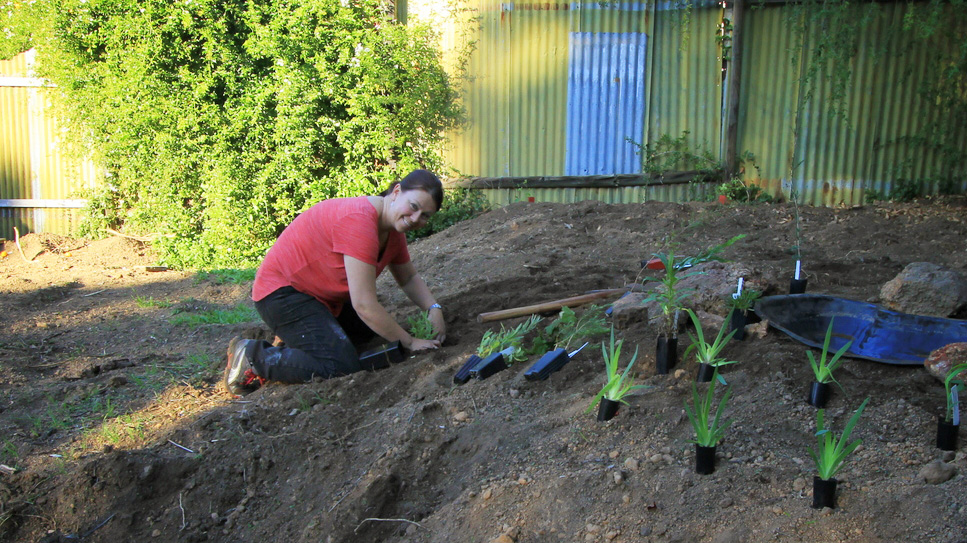Welcome to the first in a series called People of ReWild! See how others are transforming their gardens, their motivations and inspirations, and photos of their gardens. We are honoured to kick off the series with Simon and Danielle!
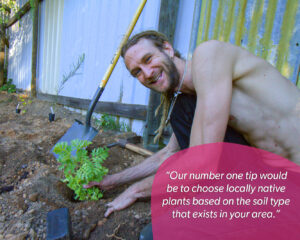
You may have heard of Simon Cherriman – he is most likely to be found high in trees studying black cockatoos and wedge-tailed eagles, or teaching groups on how to create and install nest boxes. Simon and his partner Danielle were one of the first to sign up to ReWild and have already achieved five-stars for their garden achievements, so let’s hear from them how and why they have chosen to ReWild their garden.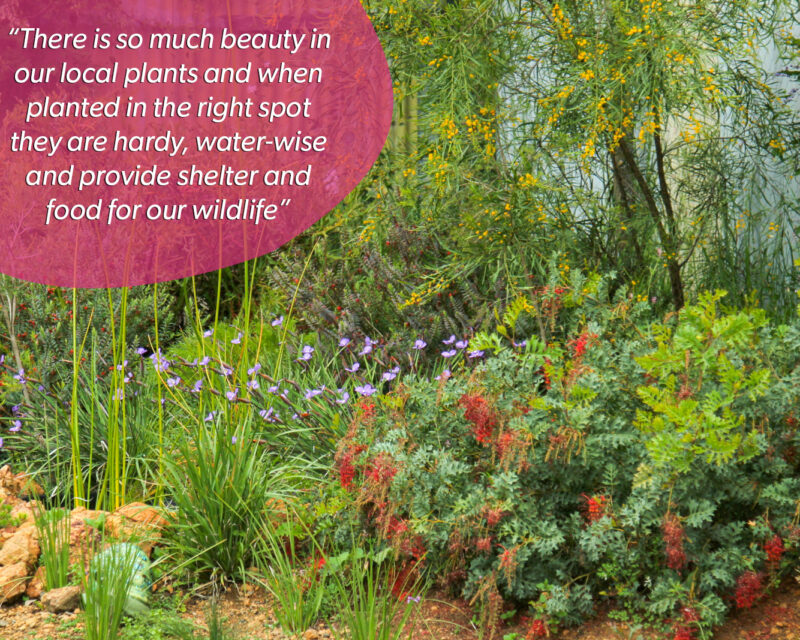
What type of ReWild garden are you creating?
Our family lives on a partially cleared, bush regrowth, one acre block in the Perth Hills that backs onto a large reserve of native vegetation. It was our intention to enhance our bush setting by regenerating and improving the understorey, creating wildlife corridors and the property’s habitat values.
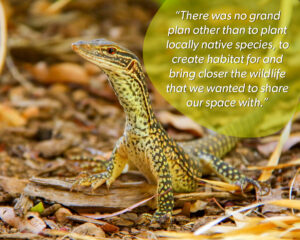
When and why did you start to ReWild your garden?
In 2017, we started work on our garden even before we began work on our tired and neglected cottage. There was no grand plan other than to plant locally native species closer to the house, to create habitat for and bring closer the wildlife that we wanted to share our space with. It was virtually a blank canvas; there was one beautiful, well-established Melaleuca preissiana tree, a weeping mulberry, and not much else.
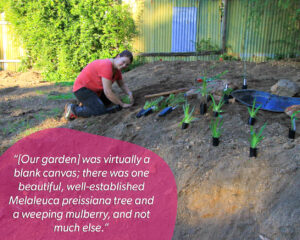
What do you love most about your ReWild garden?
The biggest joy by far has been watching the wildlife come into our garden, and seeing (and counting!) an increasing number of native species. Our boys get as excited as we do to observe the birds, mammals and reptiles using the garden day to day, season to season. This year we had Carnaby’s Cockatoos land to feed on Catkin Grevillea (Grevillea synapheae) seeds for the first time, just metres from our deck area. We would wait each morning and afternoon to see them walk around and forage on each plant. We had beautiful Red-capped Parrots coming in to feed on Fuschia Grevillea (Grevillea endlicheriana) and on our Toothed Wattle (Acacia dentifera) seeds as well, Western Spinebills and other honeyeaters forage on Kangaroo Paws and Grevillea bipinnatifida, and small to large skinks and goannas (including Sand Monitors, Varanus gouldii) utilise the shrubs and rockery areas to hide and forage.
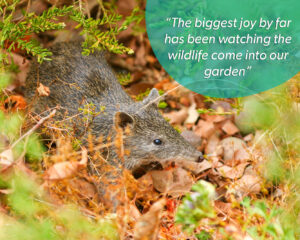
What has been the main challenge in establishing a ReWild garden?
To be honest, establishing the garden using locally native species has been easy! Perhaps the biggest challenge is to not spend ALL of our savings on our garden! We excitedly wait for the annual local wildflower sale and plan which plants we want to add. It is a cost effective way to add healthy, locally grown tube-stock to the garden and we get to support the talented growers too! It is a win-win! Due to thoughtful selections most species that we plant flourish.
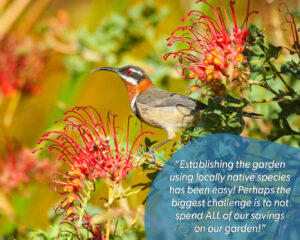
Tell us about your garden’s guests – what wildlife have you seen in your garden, including any new species since you started?
Goodness – where do we start? About two years after ‘starting’ we formulated a bird list while on a road trip with the boys and counted over 60 species. Our favourite garden species include those mentioned above (Western Spinebill, Red-capped Parrot), but we also see Scarlet Robins, Inland Thornbills, Golden Whistlers and all three species of Black Cockatoo more regularly feeding in our gum trees and shrubs.
In the warmer months we see a resident Gould’s Goanna, which is getting a little bigger with each passing year. We know our local magpie family well and each year at least three females build nests above our cottage. A pair of Tawny Frogmouths, Common Bronzewing, Australian Wood Ducks, and Western Thornbills now all breed annually on our property. We have an active group of Quenda that seem to enjoy our company and spend lots of time in our garden, especially amongst dense shrubbery. Common Brush-tail Possums are a regular nighttime visitor and we have had a Mardo using outdoor cupboards / sheds for shelter at various times of the year.
Our nest-boxes are commonly used by possums but the most exciting have been a Brush-tailed Phascogale and a breeding pair of Carnaby’s Cockatoos.
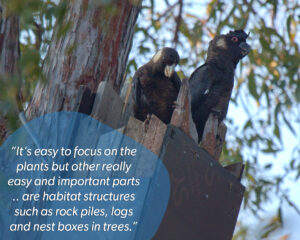
What are your top tips for someone starting a ReWild garden?
Our number one tip would be to choose locally native plants based on the soil type that exists in your area. It helps to look at patches of remnant native vegetation in your neighbourhood (visit your local reserves!) to see what is growing well, and take photos of plants that you like. Take those photos to a specialist nursery, such as Zanthorrea, to have the species identified. Attend local plant sales, join local plant groups (like the WA Wildflower Society) and get in touch with local growers. There is so much beauty in our local plants and when planted in the right spot they are hardy, water-wise and provide shelter and food for our wildlife!
It’s easy to focus on the plants but other really easy and important parts to a wildlife garden are habitat structures such as rock piles, logs and nest boxes in trees. Adding a quality, feral resistant nest-box to cater for animals dependent on tree hollows can help these creatures survive in landscape where old trees have been lost. Water for wildlife is also very important so regularly filling a few simple, shallow dishes, placed at ground level and also in elevated positions, will go a long way.
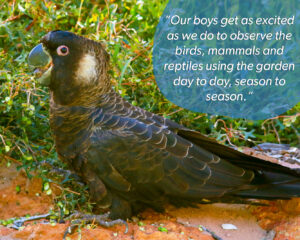
Learn more about Simon’s book ‘Hollowed out?’ on the Re-Cyc-Ology Project website: www.re-cyc-ology.com.au
Sign up to the ReWild newsletter.
Partners
We acknowledge and appreciate the support of all our partners, supporters, funding bodies and sponsors.

